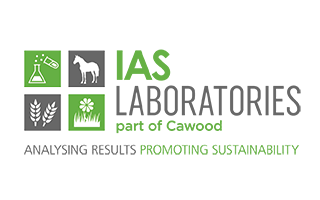How can we improve Irish waters?
How can we improve Irish waters?
Our surface waters and groundwaters worldwide are continuously under pressure from human activities. The Environmental Protection Agency (EPA) reports that there was no significant change in the biological quality of Irish rivers and lakes during 2022. Where improvements were noted, they are being offset by declines elsewhere.
Two of the most important tests IAS completes on a regular basis for waste and surface waters is biochemical oxygen demand (BOD) and chemical oxygen demand (COD) analysis. Wastewater analysis helps treatment plants maintain compliance and safeguard Irish waters and the environment.
Read on to learn more about why our waters are under so much pressure, the environmental impact of reduced oxygen levels in waters, BOD and COD, the BOD test, the COD test, and how IAS can help.
Why are our waters under so much pressure?
44% of river water bodies assessed throughout 2019-2022 were found to be in moderate, poor, or bad biological condition. 45% of lakes monitored during this time were also found to be in moderate or worse quality. Why is this?
The reasons provided by the EPA include:
- Eutrophication—nutrient pollution caused by too much nitrogen and phosphorus in the water. This causes excessive plant and algal growth.
- Agriculture—nitrate runoff into waters from agricultural activities.
- Urban wastewater—one of the most common pollution pressures. Almost half of sewage that is loaded into our waters is discharged from treatment systems that don’t meet the EU treatment and effluent quality standards.
- Intrusive fishing.
- Climate change—marine temperature and pH changes have been recorded in our waters, as well as rising sea levels and increased storm frequency.
- Microplastics in marine waters.
Regular monitoring and sampling of surface and wastewaters can help water treatment plants and organisations such as the EPA identify problem areas and make mitigation plans, helping to reduce the pressure on our waters.
The environmental impact of reduced oxygen levels
Many of these activities, such as a change in nutrient levels, can result in reduced oxygen levels.
Ireland’s marine environment is nearly 10 times its land area—one of the largest in the EU. Our temperate waters are highly productive, supporting hundreds of species of fish and invertebrates, 24 species of whales and dolphins, common and grey seals, and some of the largest breeding populations of seabirds in Western Europe.
To continue to support this kaleidoscope of marine life, we need to ensure they are getting enough oxygen to thrive. Oxygen demand plays an important role in aquatic life. The aquatic ecosystem cycle involves algae and other producers in the water taking up inorganic nutrients to produce organic tissue. As bacteria are aerobic in nature, they rob other aquatic organisms of the oxygen they need to live. This activity leads to a decrease in the natural levels of oxygen in aquatic systems, threatening marine life and reducing biodiversity.
What is BOD and COD?
The Biochemical Oxygen Demand (BOD) represents the amount of dissolved oxygen (DO) consumed by biological organisms when they decompose organic matter in water. The Chemical Oxygen Demand (COD) is the amount of oxygen consumed when the water sample is chemically oxidised.
The BOD and COD tests are the main methods used to determine the concentration of organic matter in a sample of water. These two tests are a bit different, but they are usually used together to establish the quantity of nonbiodegradable organic matter in wastewater.
Wastewater is composed mainly of biodegradable wastes. BOD is the measurement of wastewater’s organic strength, or simply put, just how much biodegradable pollutant is present. COD differs from BOD in that COD measures both organic and inorganic pollutant concentration, and is a fast, reliable method of quantifying wastewater’s degree of pollution.
The amount of BOD and COD present in wastewater depends on the availability of organic matter in water. This includes plant decay and leaf fall, urban runoffs, nutrients from fertiliser, and many other factors which all contribute to increased oxygen demand.
The BOD test
The BOD test is used to establish the quantity of oxygen that is required by aerobic bacteria to break down organic matter at a given temperature and over a certain period of time.
The rate of oxygen consumption in water is determined by a combination of factors, including the temperature of the water, the pH, the types of microbes present, and the inorganic and organic matter within. Water that has a high BOD value means that lots of the oxygen is consumed by the microbes, therefore leaving very little oxygen for other aquatic life. Any factor that affects dissolved oxygen will also affect biochemical oxygen demand.
Sources of BOD in water include leaves, topsoil slurry, animal manure, failing septic systems, effluent from industries, and stormwater runoff.
The COD test
The COD test establishes the amount of oxygen that would be needed to oxidise particulate and soluble organic matter in a water sample. Just like BOD, COD gives an index for assessing the effect of wastewater discharge on the environment. However, while the BOD test determines the bacteria population, the COD test will use strong chemical oxidising agents like potassium permanganate to chemically oxidise organic matter in the wastewater sample.
Unlike the BOD test, the COD test is immune to interference from toxic substances. It’s also faster as it takes only 3 hours—much faster than the BOD test’s 5 days.
It is important to monitor the BOD and COD in wastewater to help reduce and prevent environmental pollution. It is especially necessary to monitor discharge regularly to protect Ireland’s marine life.
IAS Laboratories is accredited to perform a comprehensive list of water analyses, including total nitrogen, total phosphorus, ortho phosphate, suspended solids, microbiology, oil, fats and grease (OFG), and various other parameters you may require. We are an INAB accredited laboratory with over 35 years’ expertise in water quality testing.
For more details, contact our sales team at [email protected].
References


